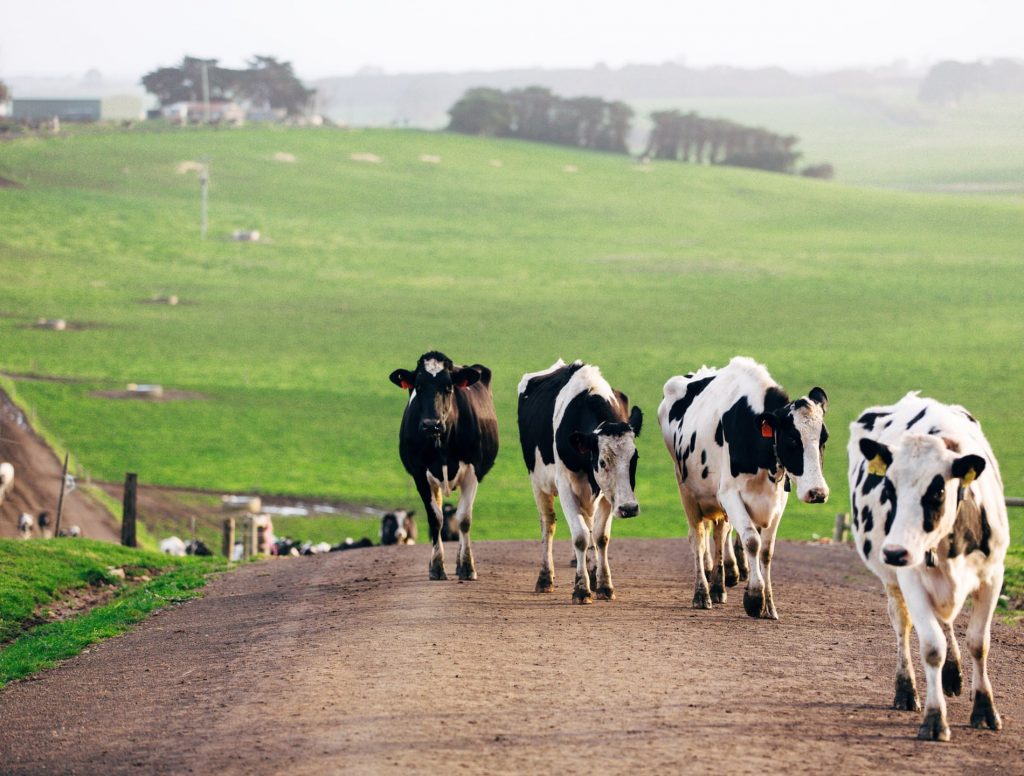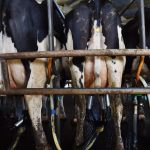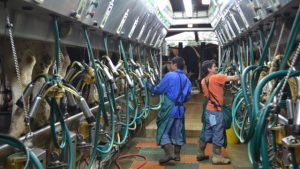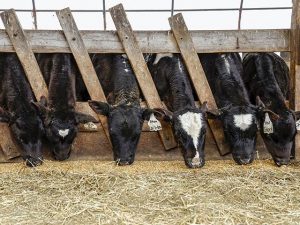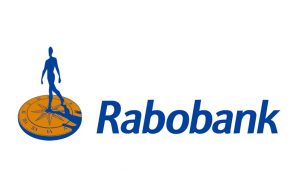
Between the salty far-south coast of New South Wales and the town of Bega, the Jelgowry dairy farm at Jellat Jellat is well acquainted with the impacts of a changing climate. It’s here on a flood plain that Philippa and Robert Russell graze 320 Illawarra Shorthorn, Friesian and Jersey cows on a mix of native pastures and annual rye-clover plantings, and milk the herd twice a day in their solar-powered dairy. “The farm has been in the family since the 1850s. My husband was born here,” says Philippa Russell.
When Philippa and Robert took over the family business in the early 1980s, the farm was devoid of trees. “In the 1800s, there was a big push for farmers to clear the land,” says Philippa. Those founding farmers soon upscaled from horse labour to steam-engine machinery, and the felling of timber continued for fuel. “It gives you some idea of what we started with. We knew the farm needed to have a better balance and a more sustainable way of farming. It wasn’t going to happen unless we changed the methods of the past.”
To begin achieving that balance, the Russells decided on yearly plantings, and the farm now has over 35,000 trees and shrubs across its 220 hectares (550 acres). “We have a better balance of insects and bird life, and the pastures do much better because they have protection from wind,” she says.
It’s also resulted in visible moisture retention in the soils, which has helped the Jelgowry farm to be more resilient in times of drought. “I believe that the plantings have helped and I think that’s why we have healthier pastures. We’re not irrigating quite so much. We’ve fenced out gullies, so we’re slowing down the water. If we have a long dry spell, we can actually make things work a lot better now than how things were in 1980.”
With the UN Intergovernmental Panel on Climate Change (IPCC) warning there are only 12 years to limit catastrophe, the need for climate action has become louder and more urgent. But dairy farmers like the Russells have had a head start, slowly building resilience throughout their almost 40-year tenure. “The extreme weather events seem to be more common. We know that droughts and floods are always going to hurt, but you want to try to minimise that damage. We’ve done this for so many years,” says Philippa.
“Dairy farmers have already seen the impacts of climate change and many businesses are making changes that are assisting them to adapt,” says Alison Kelly, Dairy Australia’s Lead – Climate and Energy.
Today, 81 per cent of dairy farmers are safeguarding a portion of their land for conservation and biodiversity (up from 45 percent in 2015). It’s just one of the ways farmers and the dairy industry are working together to protect natural capital and address climate risk.
Despite having access to the Brogo Dam for irrigation (allocation has increased from 30 per cent in July 2018 to 65 per cent in February 2019 thanks to good rain), the Russells admit water is a constant challenge. The global average water footprint of milk is about 1,000 litres of water to every one litre of milk.
“We know it’s a very precious commodity and we can’t do dairying without it, so we’re very mindful of how we use it, when we use it and the cost of it,” says Philippa. “We’ve seen the climate change. We had a 10-year drought in the 2000s. And I think that reinforced our belief that we should have a more sustainable farm. I think most people in the district woke up then because water was a big issue. And it still is.”
That 10-year-long millennium drought saw collaborative efforts between government, manufacturer Bega Cheese and local farmers to address water sustainability. And in 2004, thanks to initial funding from the federal government, the processor launched the Bega Environmental Management System (BEMS) sustainability assessment. This progressive pilot study was instrumental in implementing and quantifying the benefits of new environmental practices across water, effluent, nutrient management, fertiliser application and biodiversity. The Russells were among 20 farms participating in the study, and by 2015, 94 per cent of Bega’s farmers had engaged with the ongoing system.
Philippa says it’s been a combination of government funding and industry support that’s helped pave the way for them to invest in more sustainable methods on-farm.
“We analysed all our issues on-farm that were environmentally sensitive. There’s been some grant money to help us with fencing, tree planting, off-stream watering and effluent management,” says Philippa.
“I don’t think there’d be as much done if the funding wasn’t there. It’s certainly been a benefit, not just to ourselves but many farms in the district.”
To improve environmental sustainability and financial viability, the dairy industry has committed to the IPCC’s below 2°C target, which means reducing greenhouse gas emissions intensity by 30 per cent by 2030. While dairy processors have been working hard to minimise greenhouse gas emissions, the manufacturing space comprises five per cent of dairy’s total emissions, with 95 per cent produced on-farm.
Dairy Australia has developed tools like the Australian Dairy Carbon Calculator and the Dairy Climate Toolkit, so farmers can begin to quantify on-farm emissions and proactively identify strategies to adapt their farm systems for the future. “Enteric methane remains a high source of emissions on dairy farms and so will remain a focus for our research and development,” says Alison. “Work is currently being undertaken to review the last decades’ Dairy Farm Monitor Project data to establish the reporting baseline for measuring against the on-farm greenhouse gas emissions intensity target.”
Going forward, Dairy Australia predicts it’ll turn its attention to a scenario-based approach for assessing climate risk and researching technological options to reduce methane emissions from cows. “There will be an increasing need for researchers and farm managers to identify and implement practices on-farm to reduce the loss of greenhouse gas emissions to the environment,” says Alison.
Philippa Russell says that farming sustainably is essential to keeping the farm going in the face of extreme climate variations. “Really we’re here to look after the land and to keep it going for another generation. We’re caretakers of the land. And if you don’t do the right thing for the land, then it’s not going to give you the return that you want and need. You’ve got to look after the land you’re working with. You don’t get another shot at it,” Philippa says.
